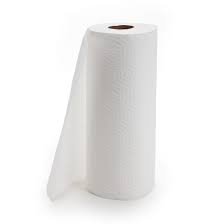When you grow your own microgreens it can be easy to assume they are safe to eat straight away, after all, you know exactly what you’ve done to them. But, you do need to consider if you should be washing them and how to wash microgreens.
After all, just because you’ve chosen the growing medium, watered them, and avoided using fertilizers; it doesn’t mean that they are ready for your plate.
You may be accustomed to growing your own food and simply eating it without washing it. But, you have to ask whether this is the best approach or not.
Do You Need To Wash and Clean Microgreens?
The short answer is yes.
Microgreens are grown in soil or a similar growing medium. They have moisture, nutrients, and air; the 3 key ingredients that allow bacteria and mold to flourish.
You won’t be able to see the bacteria, although you may see mold growth; but both of these things can be very harmful to your health.
Alongside this, it is possible that the growing media could already have bacteria in it, or that it could simply be in contact with the harvested microgreens. This allows small insects to remain on your microgreens and other potential contaminants.
It’s much safer to learn how to wash your microgreens before you consume, or store them; this will make sure you have clean microgreens that are ready to eat
How To Wash Microgreens
Microgreens are generally quite delicate you’ll need to adopt a careful approach if you want them to survive the washing process.
Top Tip: It’s a good idea to rinse your microgreens before storing them but, you’ll need to make sure they are completely dry; if you don’t they will go moldy.
There are two techniques you can use to wash your microgreens:
-
Patting Them Down
 Once you‘ve harvested your microgreens you can rinse them under a slow-flowing tap. The water should be cool, not cold or hot.
Once you‘ve harvested your microgreens you can rinse them under a slow-flowing tap. The water should be cool, not cold or hot.
It is best to take a handful of the microgreens and gently move them around in your hand as the water flows over them. This should ensure they are all thoroughly washed.
Then lay a piece of paper towel on your countertop and gently deposit your rinsed microgreens onto them. Place the second piece of paper towel on top of the microgreens and gently pat t against them. The water will soak into the paper towel.
If the paper towel becomes too saturated then throw it away and use another piece, you don’t want it breaking up and having to pick the pieces out of your microgreens.
-
The Salad Spinner
The salad spinner is actually a very effective way of washing and drying microgreens. Your salad spinner will consist of a plastic bowl, with an inner basket and a lid with a built-in handle. The handle spins the inner basket, pushing the water out of the microgreens and into the outer bowl; effectively drying them in a matter of minutes.

But, you must check that the holes on your inner basket are not too big; this won’t work if the microgreens can also be spun out of the holes!
You’ll need to carefully rinse your harvested microgreens in the same way as described for the patting down method. You can then put them into the salad spinner and spin away.
Alternatively, you can place them all in the inner basket, from the salad spinner, and allow the water to flow through the basket, while slowly turning it and perhaps lightly tossing the harvested plants. Then slide the inner basket into the spinning bowl and dry by turning the handle.
This method will allow you to dry a larger quantity of microgreens and it is faster than dabbing them with a paper towel. In fact, you could almost call this a microgreens washing station!
It is worth noting that this is an effective way of washing your microgreens but it may not leave them dry enough to store, the paper towel method is better if you’re planning on storing them.
You also can’t do this for an extended period of time; 30 seconds should be enough. If you spin it for too long the microgreens will be pushed to the edge and you’ll risk damaging them. Adding a paper towel to the salad spinner before you put the microgreens in will help you to prevent clumping or losing the microgreens through the holes in the spinner.
Bonus Tip: To avoid damaging your microgreens when washing them under a facet, you can use a spray bottle filled with water. This is just as effective as the faucet but less likely to damage them.
But, you must make sure that the bottle has never been used for anything other than water.
You should also be aware that you can immerse your plants in water by inverting the growing tray prior to harvesting and allowing them to air dry. However, this is only really an option if you have a growing medium that will not move when you turn the tray upside down.
You may also be concerned about what could arrive on the plants while you’re allowing them to air dry.
As you can see, there are 2 distinct ways to answer the question of how to wash microgreens. But, there is only one method that you should use if you’re planning to store them. That is method 1, the patting down. Combining this with watering from underneath, or depriving them of water for 8-12 hours before harvest, and you’ll have the freshest and driest possible microgreens to put into your refrigerator.
If you store them properly they can last for up to a week in your fridge. That’s a pretty good incentive to discover how to wash microgreens and make sure you get it right!